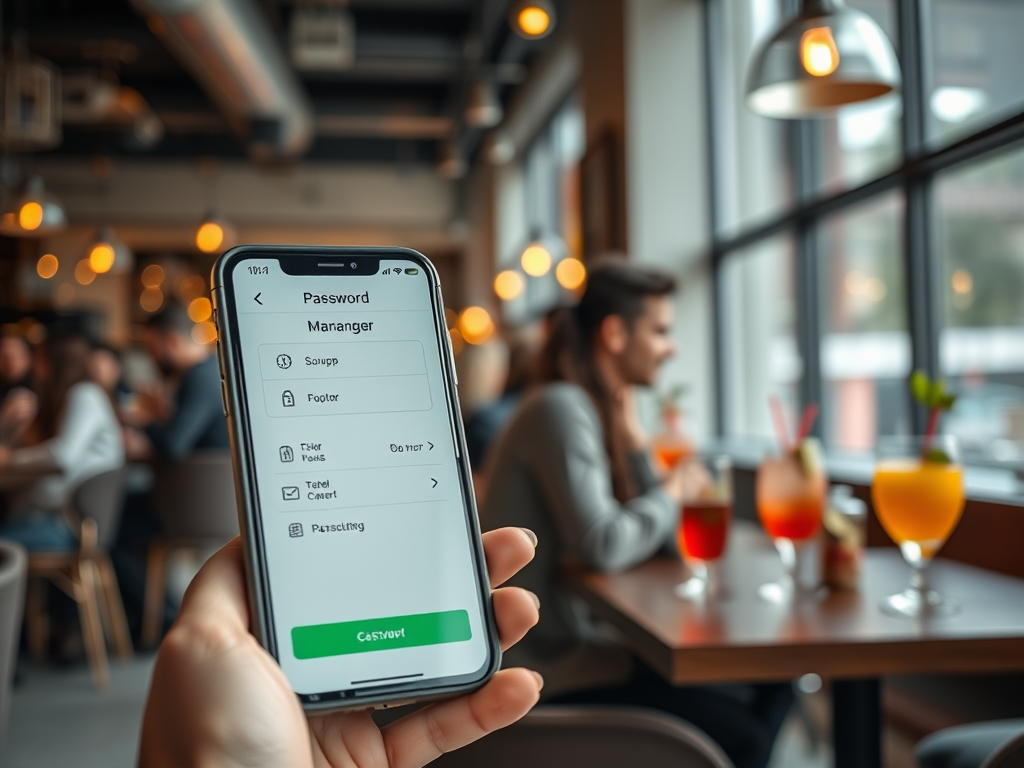In a world increasingly dominated by technology, where our lives are intertwined with our smartphones, securing these devices has never been more vital. The information we carry on our phones—ranging from personal contacts to banking details—represents a treasure trove for potential cybercriminals. Therefore, a strong password is not just an optional security measure; it’s a necessity for maintaining control over our digital lives. With robust cybersecurity threats constantly evolving, understanding the implications of weak passwords is essential. This article delves into the significance of a strong password, outlines best practices for creating one, and discusses the potential consequences of neglecting this crucial aspect of mobile security. By the end, you’ll recognize how a simple string of characters can be the difference between security and vulnerability.
Understanding the Risks of Weak Passwords

Employing weak passwords can leave your smartphone open to various risks that extend beyond mere inconvenience. Weak passwords can easily be cracked or guessed by attackers, leading to unauthorized access to your personal information. Moreover, individuals often succumb to predictable patterns, thinking that using their birthdays or common phrases suffices for security. Consequently, this common oversight not only heightens vulnerability but also makes it easier for hackers to exploit. Password reuse is another prevalent issue; by using the same password across multiple platforms, a single breach can lead to widespread compromise. To combat these threats, it is essential that consumers recognize and address these weaknesses.
- Predictable Patterns: Many users rely on easy-to-guess passwords.
- Password Reuse: Using the same password across multiple accounts raises risks.
- Social Engineering: Attackers exploit personal data to crack passwords.
The Anatomy of a Strong Password

Creating a robust password is foundational to securing your smartphone against unauthorized access. A strong password is not just about complexity; it also requires a significant length and unpredictability. Experts recommend aiming for passwords with a minimum of 12-16 characters that incorporate a mix of uppercase and lowercase letters, numbers, and special characters. This multifaceted approach helps ensure that even if one aspect of your password is known, it is still difficult to crack. Furthermore, relying on arbitrary strings of characters rather than dictionary words enhances password effectiveness. By understanding what constitutes a strong password, you can take significant steps toward protecting your device.
- Length: Aim for at least 12-16 characters.
- Complexity: Use a mix of upper and lower case, numbers, and symbols.
- Unpredictability: Avoid dictionary words or easily guessable sequences.
| Strong Password Example | Weak Password Example |
|---|---|
| G3!lWk$5#qJ8duP8 | password123 |
| abcde | |
| mNp7%Tl2@6Bk7XfA | letmein |
Best Practices for Password Management
Implementing effective password management strategies can dramatically improve your phone’s security posture. Consistency and diligence are your allies in maintaining the integrity of your passwords. For instance, using a password manager can not only generate complex passwords but also store them securely. This reduces the likelihood that you will resort to weak passwords due to forgetting them. It’s also advisable to enable two-factor authentication whenever possible, as this adds an additional layer of security. Lastly, consider setting reminders for regular password updates; changing your passwords periodically minimizes the threats posed by stolen credentials.
- Use a Password Manager: Securely generate and store complex passwords.
- Enable Two-Factor Authentication: Add an extra layer of security.
- Regularly Update Passwords: Change them every few months.
Consequences of Not Using Strong Passwords
The repercussions of neglecting password security can be severe and far-reaching. Weak passwords can lead to identity theft, where malicious actors access sensitive information to commit fraud. This not only compromises your financial security, but can also result in damaged personal reputation and emotional distress. In addition, poor password choices may result in total data loss, either through deletion or ransomware attacks that hold your data hostage. Lastly, weak passwords can lead to invasions of privacy, allowing unauthorized individuals to access personal emails, photos, and vital documents. With the stakes this high, the necessity of strong password practices becomes glaringly apparent.
Conclusion
In a digital landscape where threats are continuously evolving, securing your smartphone through strong passwords is essential. Understanding the risks associated with weak passwords, combined with effective management practices, can significantly enhance your device’s security. Whether you opt for a password manager, enable two-factor authentication, or revisit how often you change your passwords, each step contributes to a more robust security framework. Ultimately, safeguarding your sensitive information begins with your commitment to creating and maintaining strong passwords. The peace of mind that comes from knowing you’ve taken proactive steps to protect your digital life is invaluable.
Frequently Asked Questions
- What makes a password strong? A strong password is long, complex, and unique, consisting of various character types and avoiding easily guessable information.
- How often should I change my passwords? It is advisable to change your passwords every three to six months or immediately if you suspect any unauthorized access.
- Can I use a password manager for my phone? Yes, most password managers are available as mobile applications and can securely store and generate passwords for phone users.
- Is two-factor authentication required? While not mandatory, enabling two-factor authentication adds a crucial layer of security beyond just using a password and is highly recommended.
- What should I do if I forget my password? Use the password recovery options available through your device or account settings, or consult customer support for assistance.
